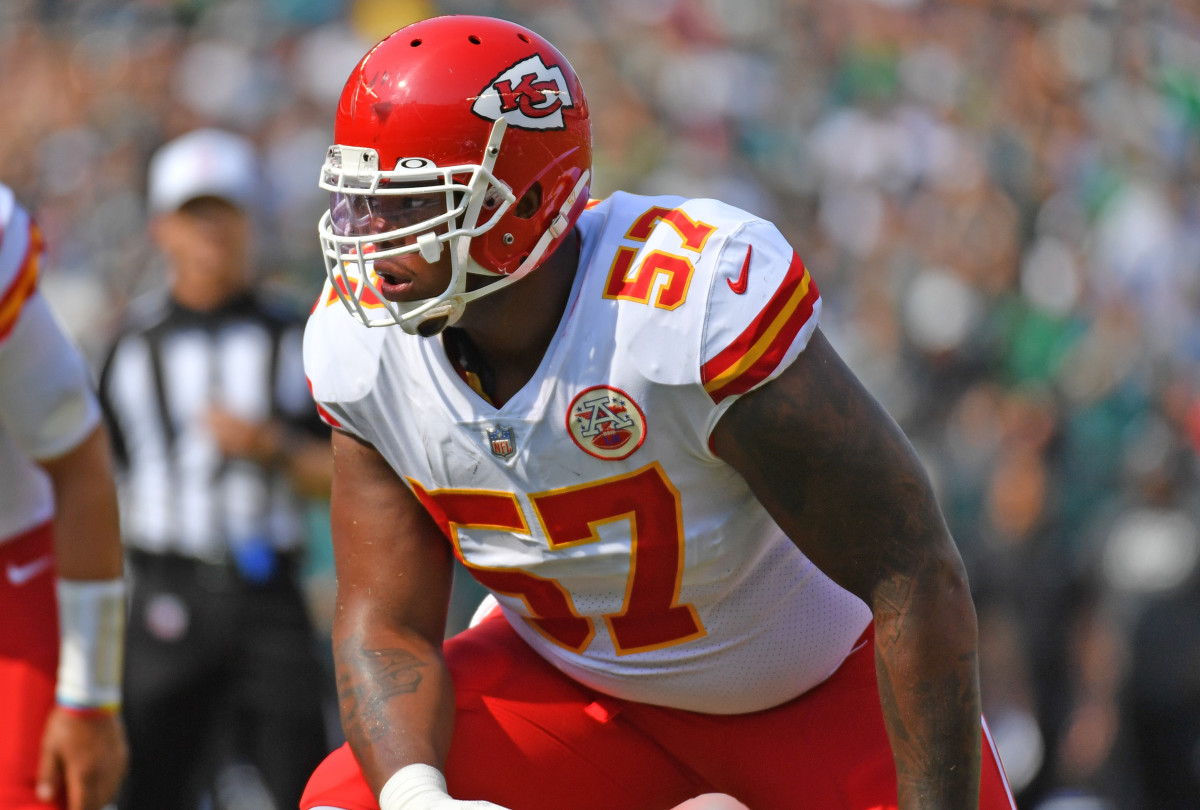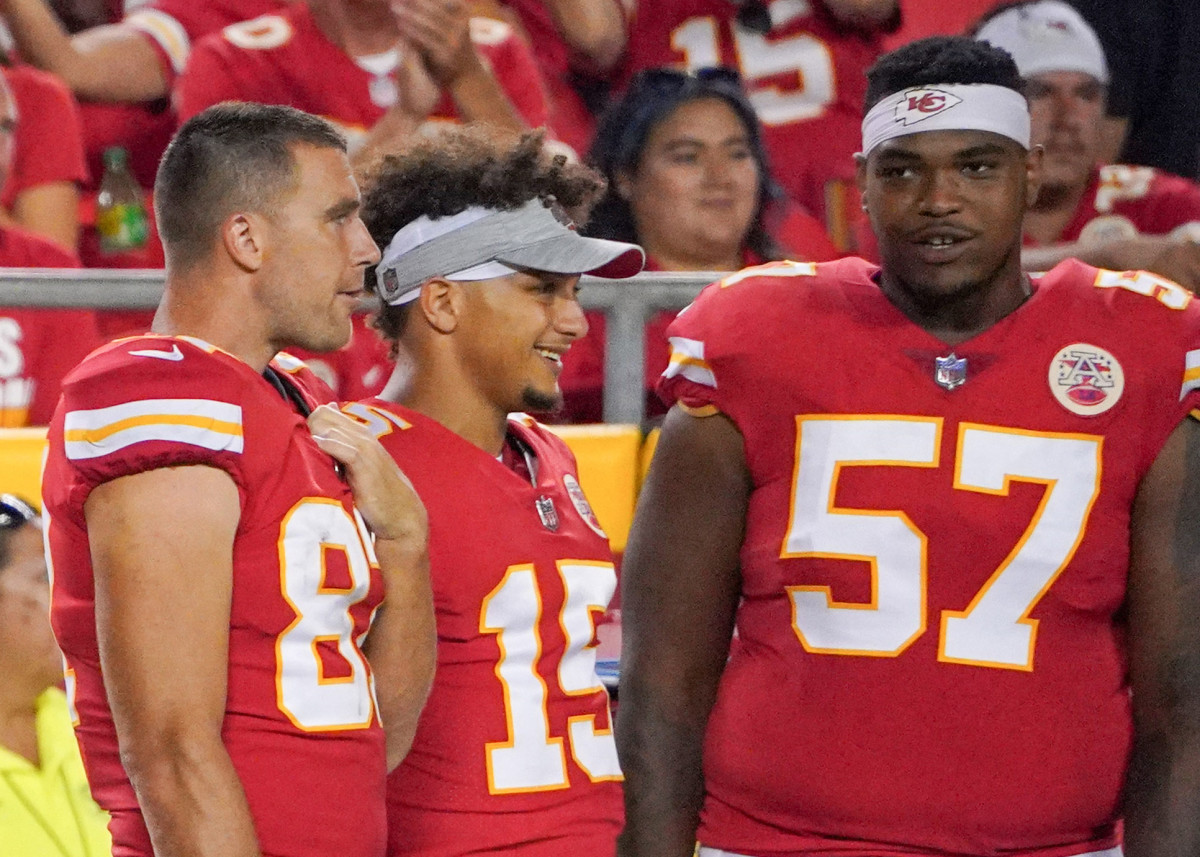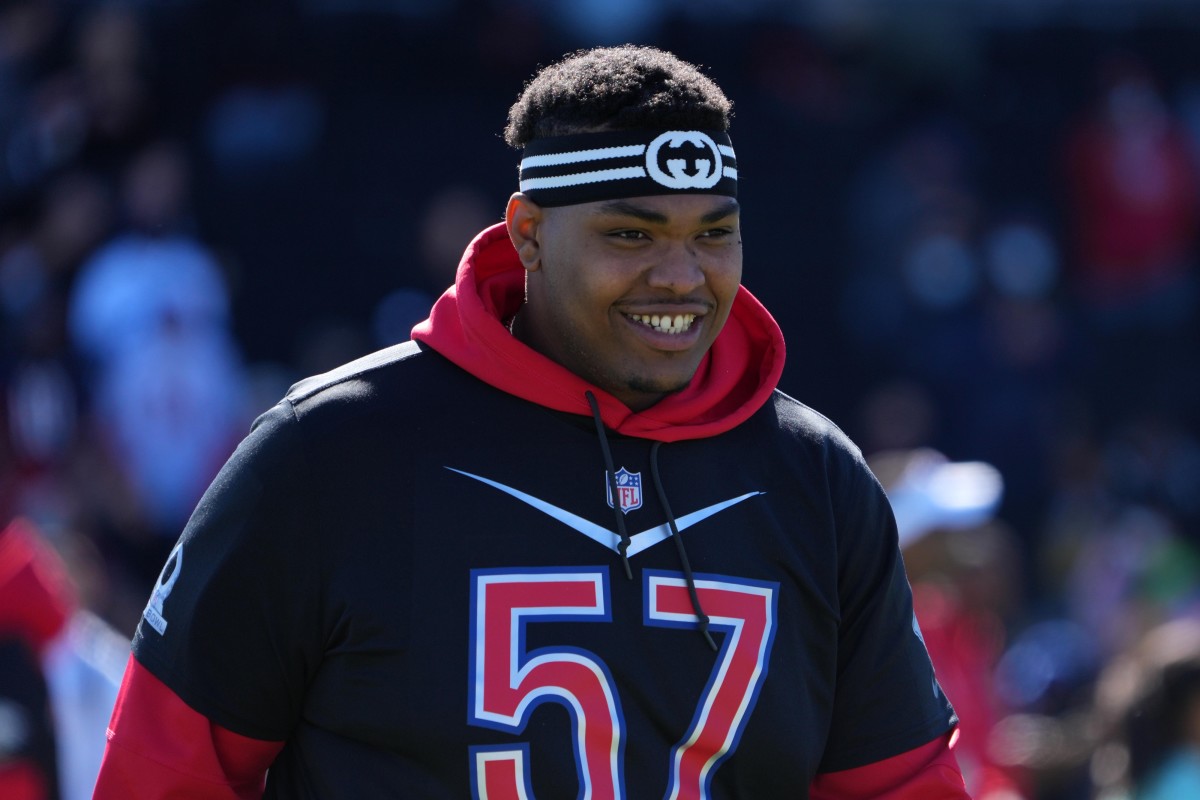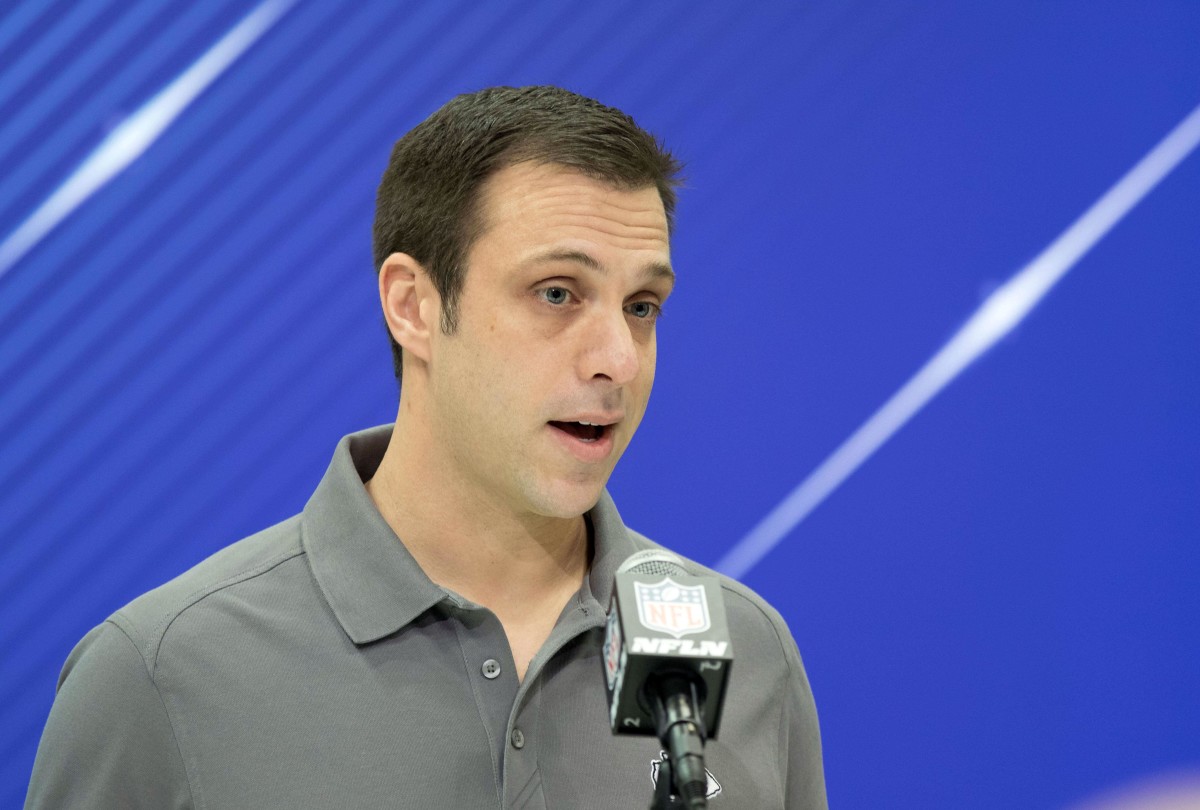Orlando Brown Jr. Is Worth the Contract He's About to Get
Whether people like it or not, Orlando Brown Jr. is about to get paid. The amount of money that the Kansas City Chiefs' left tackle is about to be handed is so large that he could probably re-enact the famous animated scene where Scrooge McDuck dove into a pool of gold coins.
After searching for a while, Brown has finally landed an agent and the next steps of his negotiation with the Chiefs can now begin. With well over a month left until the deadline for franchise-tagged players to sign long-term contracts (July 15), it's very likely that Brown and the Chiefs will reach an agreement before then. General manager Brett Veach has constantly reminded those outside the building that giving Brown a long-term contract was the biggest priority of this offseason.

I wrote about how Brown was playing himself into a big contract in November of last year, and Brown’s play kept improving after the article was published. In the article, I postulated Brown would get a five-year, $102 million contract. Brown will probably get a bit more than that $102M total in his upcoming extension. The reality of the current NFL is that Brown is probably worth a five-year, $115M contract.
Brown being worth that contract can be tied to a contract the Chiefs gave their superstar quarterback, Patrick Mahomes. The way Mahomes’s extension has aged is the same reason why massive contracts are fine to hand out in the current NFL financial landscape. After a brief dip due to COVID-19, the salary cap is projected to explode over the next few years due to increased revenue sharing dedicated to the cap. That explosion will almost always outpace contracts already signed because agents can only leverage future increases in the salary cap to a certain extent.
For example, Mahomes has a salary cap hit of $35.8M this year when the NFL salary cap is $208.2M. Mahomes’s salary cap hit as a percentage of the overall cap taken up is 17.2% this year, which is a sizeable chunk.
OverTheCap.com currently has the 2024 salary cap projected as $256M. Mahomes’s salary cap hit that year is $44.2M. Using those numbers, his percentage of the salary cap taken up is, again, 17.2% despite his cap hit being $8M higher. $256M is also a lower-end estimate for that 2024 figure.

The explosion of the salary cap is going to make contracts given out to players over the next few years seem massive. This is an issue with perspective, not with contract value. Since 2011, the salary cap has increased from $120M to $208.2M (74%), and that's with a global pandemic deflating growth during the later years of that decade. Mahomes's $36.2M cap hit in 2022 would be $20.64M back during the 2011 season if he had the same percentage of salary cap space occupied.
With all of this said, Brown will get gaudy money in his new contract, but it's hard to compare his contract to ones in the past due to how the salary cap rises in the NFL.
One other key aspect of the Brown contract talks is that the Chiefs have already seen him play a year in their system. This is important when comparing Brown to the other massive trade Veach has done, the Frank Clark trade. Brown is at least a good fit in the current offensive system, and confirming that he is healthy and ready for the future is worth a lot for peace of mind. The Chiefs are not in danger of having Brown’s contract go so incredibly wrong as Clark’s did.
A thing to keep in mind about Brown’s upcoming contract is that great tackle prospects are almost always drafted in the top half of a draft, and it's hard to find above-average ones later on. After quarterback, offensive tackle might be the toughest position to find a starter at outside the first round. With the Chiefs almost surely drafting in the latter half of the first round for the next decade, they are not in a great position to target a great left tackle prospect.

The reasons why a large money contract for Brown is palatable should not be misconstrued into meaning that any large contract for Brown is acceptable. It's still a fact that Brown is not currently a top-five left tackle in the league. He should be giving the Chiefs some team-friendly concessions because of that. This can happen in larger non-guaranteed salaries in years four and five, no guaranteed salary in year three, and maybe a six-year deal to spread out money even more.
What would a major-market contract that somehow incorporates some concessions look like, though? Five years, $115M in total money, $62M fully guaranteed at signing with a $25M signing bonus is the standard for these purposes. Here's a breakdown:
- Year One: $2M base salary, $5M prorated bonus, $7M cap hit
- Year Two: $16M base salary, $5M prorated bonus, $21M cap hit
- Year Three: $19M base salary, $5M prorated bonus, $24M cap hit
- Year Four: $25M base salary, $5M prorated bonus, $30M cap hit
- Year Five: $28M base salary, $5M prorated bonus, $33M cap hit
That's a lot of money, however, there are reasons why this contract is agreeable.
The most important thing from the Chiefs' perspective is that Brown would be cuttable in 2025 when his salary cap hit balloons to $30M (if need be) with only $10M in dead cap and $20M in savings. In the first three years of the contract, Brown's cap hits do not break the top three at left tackle in any year. The closest it gets is the fourth-highest cap hit in 2024.

For Brown, though, this is a huge payday. It's one of the largest signing bonuses given to a left tackle, and the guarantees in the first three years are really strong. (Those are the numbers that truly matter.)
This contract would be a win-win. The Chiefs would lock in a left tackle that is young, durable and has tape that proves he can work in their system. In return, Brown gets the investment in him that he has been seeking and the long-term security he desires.
While the money that will be handed to Brown will be substantial, use this as a reminder that the paying rate for players in the NFL is about to skyrocket. Paying Brown over $100M is not a mistake, it's simply smart business.
